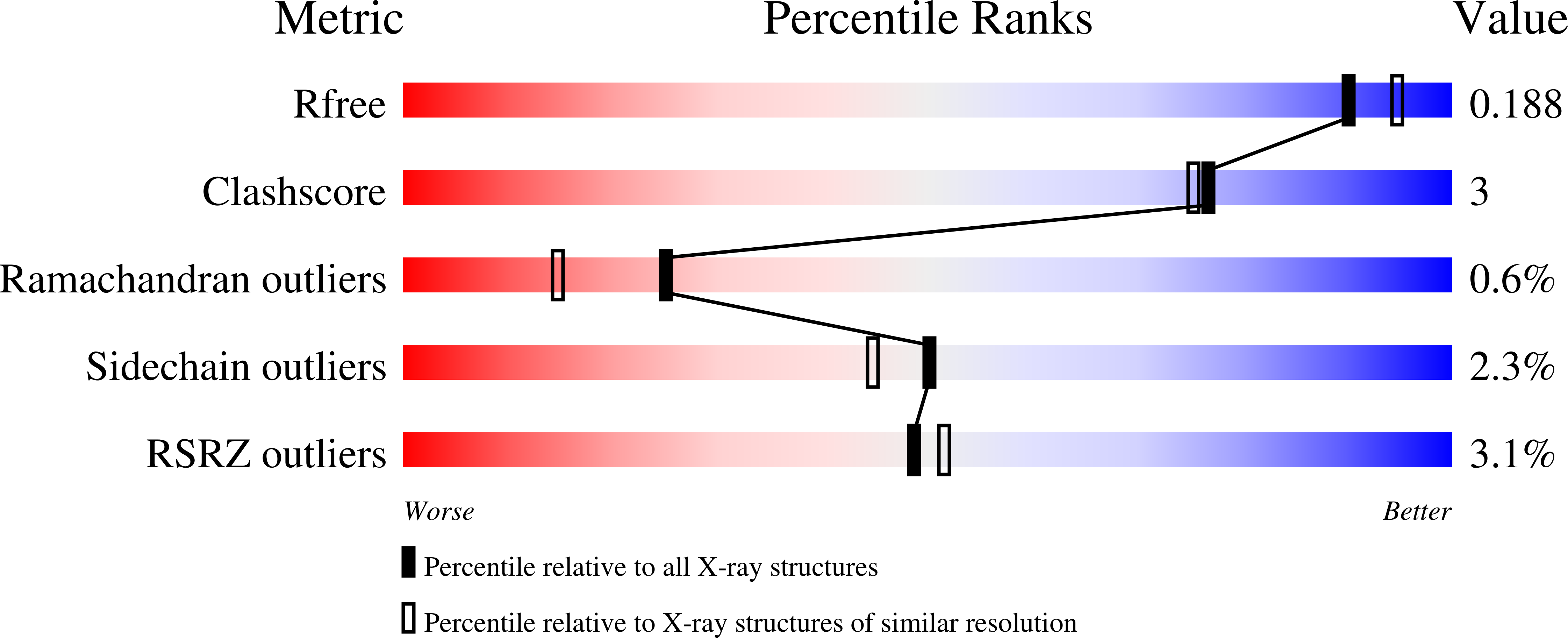Crystal structure of human glyoxalase II and its complex with a glutathione thiolester substrate analogue.
Cameron, A.D., Ridderstrom, M., Olin, B., Mannervik, B.(1999) Structure 7: 1067-1078
- PubMed: 10508780
- DOI: https://doi.org/10.1016/s0969-2126(99)80174-9
- Primary Citation of Related Structures:
1QH3, 1QH5 - PubMed Abstract:
Glyoxalase II, the second of two enzymes in the glyoxalase system, is a thiolesterase that catalyses the hydrolysis of S-D-lactoylglutathione to form glutathione and D-lactic acid. The structure of human glyoxalase II was solved initially by single isomorphous replacement with anomalous scattering and refined at a resolution of 1.9 A. The enzyme consists of two domains. The first domain folds into a four-layered beta sandwich, similar to that seen in the metallo-beta-lactamases. The second domain is predominantly alpha-helical. The active site contains a binuclear zinc-binding site and a substrate-binding site extending over the domain interface. The model contains acetate and cacodylate in the active site. A second complex was derived from crystals soaked in a solution containing the slow substrate, S-(N-hydroxy-N-bromophenylcarbamoyl)glutathione. This complex was refined at a resolution of 1.45 A. It contains the added ligand in one molecule of the asymmetric unit and glutathione in the other. The arrangement of ligands around the zinc ions includes a water molecule, presumably in the form of a hydroxide ion, coordinated to both metal ions. This hydroxide ion is situated 2.9 A from the carbonyl carbon of the substrate in such a position that it could act as the nucleophile during catalysis. The reaction mechanism may also have implications for the action of metallo-beta-lactamases.
Organizational Affiliation:
Department of Molecular Biology Uppsala University Biomedical Center Box 590, S-751 24, Uppsala, Sweden Structural Biology Laboratory Department of Chemistry University of York Heslington, York, UK YO10 5DD,. cameron@yorvic.york.ac.uk.



















